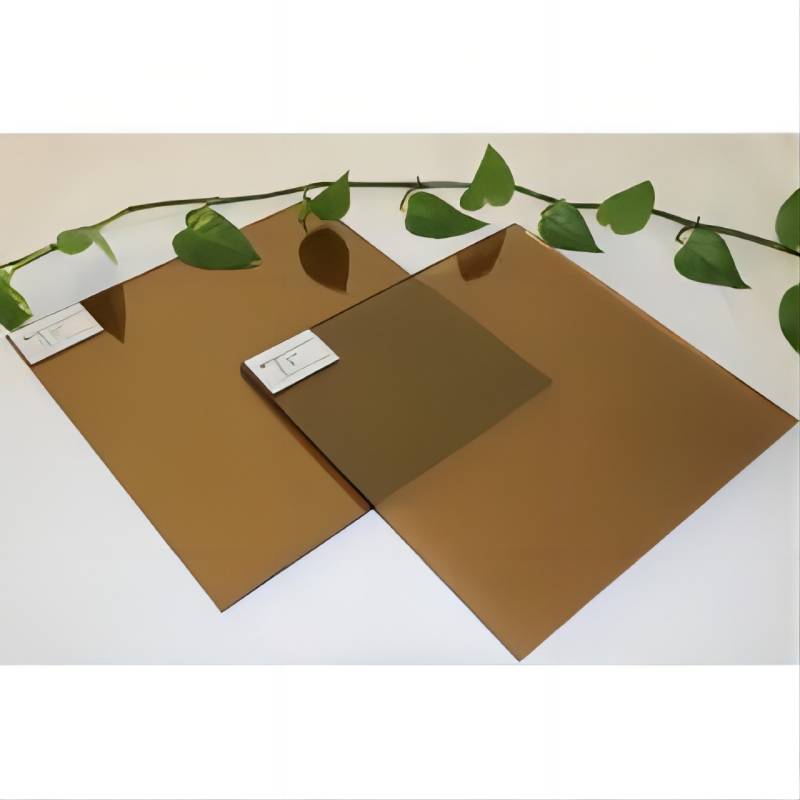The Versatility and Applications of White Float Glass
White float glass, a staple in the construction and design industries, is renowned for its clarity, smooth surface, and remarkable versatility. This type of glass is produced through the float glass process, a method invented in the 1950s that involves floating molten glass on a bed of molten tin. This technique results in a uniform thickness and an exceptionally flat surface, making it ideal for various applications.
One of the most common uses of white float glass is in building and construction. It serves as a primary material for windows, facades, and partitions. Its transparency allows natural light to enter buildings, enhancing their aesthetics and energy efficiency. Additionally, white float glass can be treated or coated to improve its thermal insulation properties, thereby reducing energy consumption. This is particularly beneficial in residential and commercial properties where energy costs can be significant.
In the realm of interior design, white float glass plays a crucial role. Designers often utilize it for decorative elements, such as tabletops, mirrors, and cabinetry. The glass's pristine appearance adds a touch of elegance to any space, while its reflective qualities can create an illusion of more space and light. Furthermore, white float glass can be etched or printed with patterns and images, allowing for customized designs that cater to individual tastes and preferences.
white float glass
The automotive industry also benefits from the unique properties of white float glass. It is used for windshields, side windows, and rear windows in vehicles. The strong and lightweight characteristics of this glass enhance vehicle safety and fuel efficiency. Moreover, manufacturers often apply tinted or laminated layers to provide UV protection and reduce glare, contributing to a more comfortable driving experience.
Another important aspect of white float glass is its role in the solar energy sector. It is commonly used in the production of solar panels. The high transparency of the glass allows it to effectively transmit sunlight while protecting the photovoltaic cells from environmental elements. This application supports the growing demand for renewable energy solutions, making white float glass integral to sustainable development.
Despite its advantages, it is essential to consider the environmental impact of glass production. The manufacturing process can consume significant energy and resources. However, efforts are underway to enhance sustainability in glass production. Recycled glass is increasingly being used as a raw material, reducing the need for virgin resources and minimizing carbon emissions.
In conclusion, white float glass is a multifaceted material that significantly contributes to various industries, from construction to automotive and renewable energy. Its clarity, durability, and adaptability make it a preferred choice for architects, designers, and manufacturers alike. As the world moves towards more sustainable practices, the future of white float glass looks promising, with innovations aimed at reducing its environmental footprint while expanding its applications. Whether used in modern buildings, stylish interiors, or innovative energy solutions, white float glass continues to shine as a versatile and essential material in our everyday lives.
 Afrikaans
Afrikaans  Albanian
Albanian  Amharic
Amharic  Arabic
Arabic  Armenian
Armenian  Azerbaijani
Azerbaijani  Basque
Basque  Belarusian
Belarusian  Bengali
Bengali  Bosnian
Bosnian  Bulgarian
Bulgarian  Catalan
Catalan  Cebuano
Cebuano  Corsican
Corsican  Croatian
Croatian  Czech
Czech  Danish
Danish  Dutch
Dutch  English
English  Esperanto
Esperanto  Estonian
Estonian  Finnish
Finnish  French
French  Frisian
Frisian  Galician
Galician  Georgian
Georgian  German
German  Greek
Greek  Gujarati
Gujarati  Haitian Creole
Haitian Creole  hausa
hausa  hawaiian
hawaiian  Hebrew
Hebrew  Hindi
Hindi  Miao
Miao  Hungarian
Hungarian  Icelandic
Icelandic  igbo
igbo  Indonesian
Indonesian  irish
irish  Italian
Italian  Japanese
Japanese  Javanese
Javanese  Kannada
Kannada  kazakh
kazakh  Khmer
Khmer  Rwandese
Rwandese  Korean
Korean  Kurdish
Kurdish  Kyrgyz
Kyrgyz  Lao
Lao  Latin
Latin  Latvian
Latvian  Lithuanian
Lithuanian  Luxembourgish
Luxembourgish  Macedonian
Macedonian  Malgashi
Malgashi  Malay
Malay  Malayalam
Malayalam  Maltese
Maltese  Maori
Maori  Marathi
Marathi  Mongolian
Mongolian  Myanmar
Myanmar  Nepali
Nepali  Norwegian
Norwegian  Norwegian
Norwegian  Occitan
Occitan  Pashto
Pashto  Persian
Persian  Polish
Polish  Portuguese
Portuguese  Punjabi
Punjabi  Romanian
Romanian  Russian
Russian  Samoan
Samoan  Scottish Gaelic
Scottish Gaelic  Serbian
Serbian  Sesotho
Sesotho  Shona
Shona  Sindhi
Sindhi  Sinhala
Sinhala  Slovak
Slovak  Slovenian
Slovenian  Somali
Somali  Spanish
Spanish  Sundanese
Sundanese  Swahili
Swahili  Swedish
Swedish  Tagalog
Tagalog  Tajik
Tajik  Tamil
Tamil  Tatar
Tatar  Telugu
Telugu  Thai
Thai  Turkish
Turkish  Turkmen
Turkmen  Ukrainian
Ukrainian  Urdu
Urdu  Uighur
Uighur  Uzbek
Uzbek  Vietnamese
Vietnamese  Welsh
Welsh  Bantu
Bantu  Yiddish
Yiddish  Yoruba
Yoruba  Zulu
Zulu 

